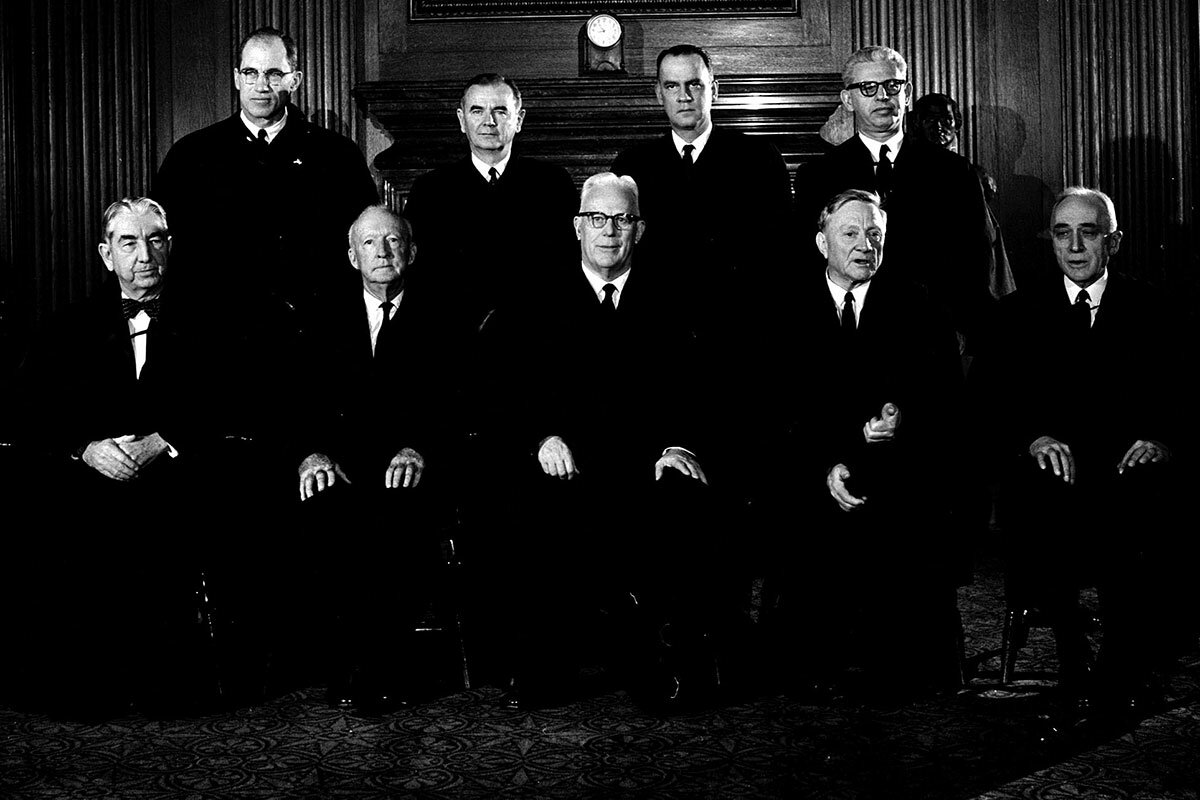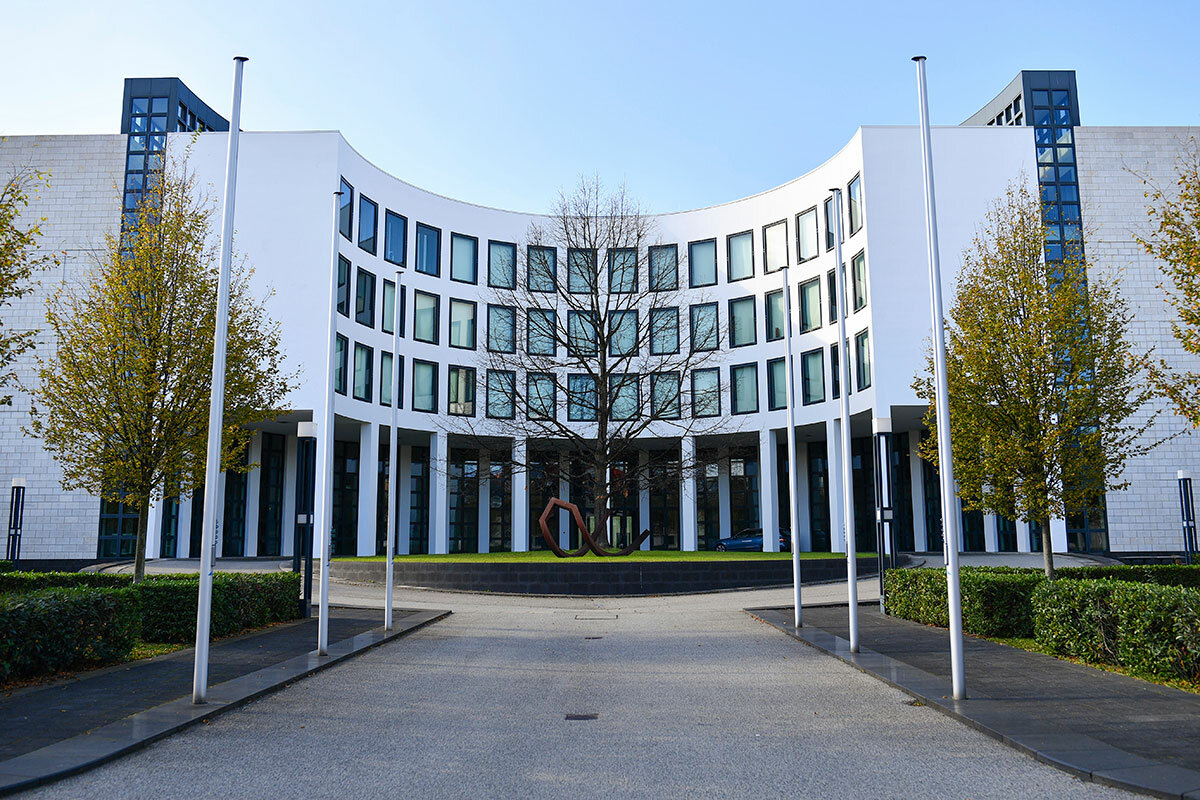In its infancy, the U.S. Supreme Court was the runt of the litter of America’s new institutions.
The court had little power compared to Congress or the presidency. Justices traveled the country hearing cases in grueling, unglamorous “circuits.” When they weren’t doing that, they worked out of the U.S. Senate basement. John Rutledge, one of the first justices, resigned inside of a year to serve on South Carolina’s highest court.
Today, almost 250 years later, the high court has matured, and its voice in American democracy has perhaps never been louder. Whether it’s redrawing the landscape of constitutional rights, determining the limits of the federal government’s regulatory power, or policing how states can and can’t run elections, the Supreme Court and its nine justices almost by default have become who we rely on to resolve the country’s toughest issues.
Consequently, since the Warren Court era of the 1960s, the court has been a political flashpoint.
And over that time, the American judiciary has ceased to be a model for constitutional democracies around the world. Features of the American system – a rigid, difficult-to-amend Constitution; justices with lifetime appointments; hyperpartisan confirmation processes – are bugs in court systems around the world.
Both Congress and President Joe Biden have explored ways to reform the Supreme Court in the past year, including controversial calls to add more justices to the court, but there is no widespread support for structural reforms. Meanwhile, confidence in the court hit a historic low in June of this year, even before it overturned the right to abortion and granted itself broad power to strike down federal regulations. Next term could be just as momentous, with the court hearing a case through which it could transform how federal elections are run.
“We have decided that we need a decider in our system. And you need that in a political system,” says Sara Benesh, a political science professor at the University of Wisconsin, Milwaukee.
“The [Supreme] Court has always been political ... but never to this extent,” she adds. “People are really reacting to the court the way they react to politicians, and that is new.”
High courts are different in other countries
Today, the role the U.S. Supreme Court plays in its government system may be unique among nations.
When Argentina set up its court system in the 1860s, it looked to the U.S. Five justices staff the country’s supreme court, nominated by the president and confirmed by the Senate. They serve until age 75, at which point they can stay for five-year terms pending approval from the president and the Senate.
Colombia took a similar path after it became independent, but the judiciary’s power remained minimal even as the country adopted 13 different constitutions over a century. The most recent constitution, enacted in 1991, broke from the American model by creating four high courts, including a supreme court and a constitutional court. Their sizes range from nine judges to 27, and most judges serve nonrenewable eight-year terms.
Most Latin American judiciaries resemble Colombia’s, says David Landau, a professor at Florida State University College of Law, and “in that respect Latin American looks a lot like Europe.”
“What that means is you have high courts very involved in politics,” he adds. But those more modern features, like term limits, larger courts, and easier-to-amend constitutions, “reduces the friction between the judiciary and democracy.”
Courts in Europe and Africa exemplify this approach. The U.S. Constitution is four pages and 5,000 words long, and it has been amended 27 times in its 230-year history. Germany, meanwhile, amends its constitution roughly once a year. South Africa’s Constitution is over 70 pages long and includes explicit rights to water, health care, housing, and reproductive rights. The South African Constitution has been amended 17 times since its ratification in 1996.
That may seem like a recipe for instability, if not chaos, but scholars who study foreign courts say that having a broad menu of ways to respond to court decisions reduces the pressure and scrutiny on the courts. Stakes are lowered, because even those who disagree with a major court ruling have avenues for recourse, and alternatives to despair.
“Ironically, you want a court to be held in high esteem, but you also want it to not be the last word,” says Kim Lane Scheppele, a professor at Princeton University who has studied fledgling judiciaries in Europe.
“You want it to be the almost-last word,” she adds. “If [the court] does something that generates a huge political backlash, you want the backlash to go through politics, not the court. You want the law to be changed rather than the court be destroyed.”
Germany has two high courts, for example, with 16 high court judges, so there are no cases decided by a single “swing” judge. Their decisions are also all unsigned, so the public doesn’t know how individual judges vote in cases. Again, this is anathema to the U.S. system – and it’s certainly less transparent – but Dr. Scheppele believes this reinforces public confidence of the courts.
“What judges should aim to be is to be consistent with the court, and that may mean they change their views from case to case,” she says.
In America, “judges feel a pressure to be consistent with themselves,” she adds. “But it’s not about them, it’s about the court.”
How Supreme Court became U.S. “decider”
Not only is it more about the court than the judges, but it’s more about the democracy writ large than the court. And in America, the Supreme Court’s influence has grown as other checks on its power have diminished, experts say.
First, because the U.S. Constitution is unusually difficult to change compared to other countries – an amendment must be approved by two-thirds of Congress and then ratified by three-quarters of state legislatures – the court’s role as chief interpreter of what the Constitution protects gives it outsized influence compared to other countries. When the court interprets the Constitution in an unpopular way, it’s very difficult to respond by changing the Constitution.
Another avenue of democratic response – legislation – has also become more difficult. The framers of the Constitution didn’t anticipate the rise of political parties (let alone the intense partisanship dividing America today). Instead, they designed American democracy with the idea that different branches of government would check each other. If the court made a decision the people didn’t like, they could pressure Congress to pass a law reversing it.
But with rising partisanship, members of Congress have become more loyal to their party than their institution, and “they have done none of that checking of the Supreme Court,” says Anna Law, a political science professor at City University of New York, Brooklyn College.
“The Framers could not have predicted that one of the branches of government would not check the other simply because of partisanship,” she added.
One marker of the significance of the court’s past term is that Congress has acted in response – and in anticipation. Amid concerns the Supreme Court decision overturning the right to abortion could lead to other unenumerated rights being overturned, the House last month passed bills codifying the right to same-sex marriage and birth control. Their prospects are uncertain in the Senate.
“Over time the court does follow public opinion, and [that’s] because of that electoral connection to the president and the Senate,” says Dr. Benesh at the University of Wisconsin, Milwaukee.
“Once you break that electoral connection, then everything downstream is broken too,” she adds.
The U.S. is trying to exert, and reinforce, that electoral connection. But the existing constitutional system makes it difficult. A presidential commission on the Supreme Court last year made several recommendations for reforming the court, but none of the more significant proposals – such as increasing the number of justices, or imposing term limits on them – have gained traction.
“There are lots of choke points in our democratic system, even when it’s working the way it’s supposed to,” says Kermit Roosevelt, a professor at the University of Pennsylvania Carey Law School and a member of the presidential commission.
It’s for this reason the Supreme Court “does play a larger role in our politics than just about any other country’s high court,” he adds. And it’s for this reason the U.S. judicial system has fallen out of favor globally.
The more popular judicial model may now be Germany, according to Dr. Scheppele. There, judges often talk openly about their work and its implications. In America, current and prospective Supreme Court justices are subject to intense scrutiny but say precious little about their work, creating an aloofness that can be damaging.
Justices are unelected and serve for life, but “you can’t talk to them about their jobs,” says Dr. Scheppele. Globally, “the [U.S.] Supreme Court is an outlier in this extreme personality cult of the [justices].”
Canada has some unique features as well that divert political heat from its supreme court. Parliament or a provincial legislature can pass legislation overriding a supreme court decision, but the legislation must be reapproved every five years. The clause is rarely used, but “it sets up a dialogue,” she says.
“When the court makes a [unpopular] decision in the U.S., there’s no place for the flames to go,” she adds. “In Canada there’s a place for the flames to go.”
“It’s like we’re driving around a Model T and everyone else has some futuristic car that flies. It’s such an antiquated technology, and it’s not suited to the moment.”







